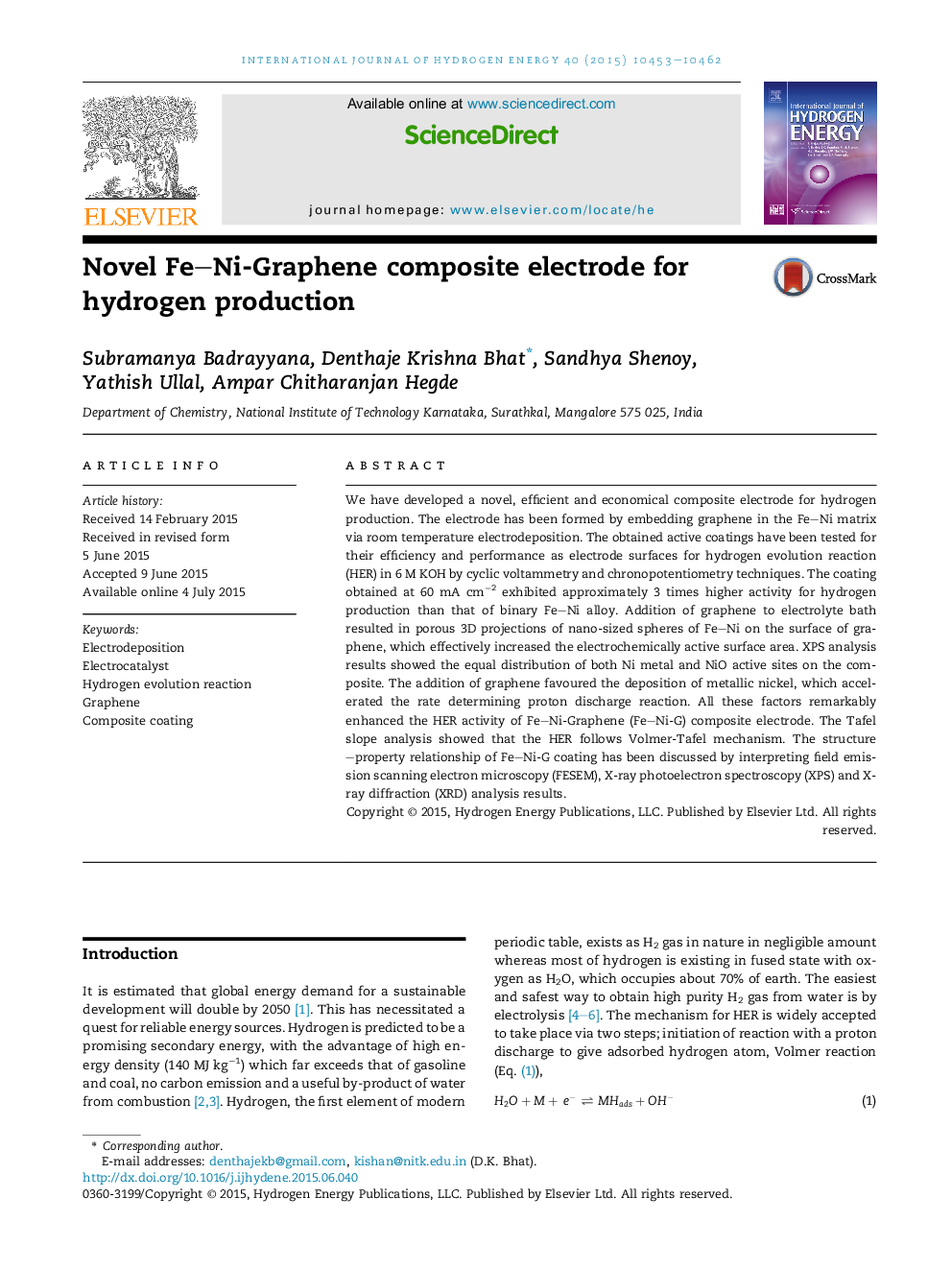| Article ID | Journal | Published Year | Pages | File Type |
|---|---|---|---|---|
| 1279097 | International Journal of Hydrogen Energy | 2015 | 10 Pages |
•A novel HER catalyst containing nanoscale Fe–Ni-G.•Synthesized by single step electrodeposition.•Simple method to develop 3D surfaces on flat electrodes without post treatment of electrodeposited samples.•A low cost, highly active and promising electrocatalyst for future water splitting devices.
We have developed a novel, efficient and economical composite electrode for hydrogen production. The electrode has been formed by embedding graphene in the Fe–Ni matrix via room temperature electrodeposition. The obtained active coatings have been tested for their efficiency and performance as electrode surfaces for hydrogen evolution reaction (HER) in 6 M KOH by cyclic voltammetry and chronopotentiometry techniques. The coating obtained at 60 mA cm−2 exhibited approximately 3 times higher activity for hydrogen production than that of binary Fe–Ni alloy. Addition of graphene to electrolyte bath resulted in porous 3D projections of nano-sized spheres of Fe–Ni on the surface of graphene, which effectively increased the electrochemically active surface area. XPS analysis results showed the equal distribution of both Ni metal and NiO active sites on the composite. The addition of graphene favoured the deposition of metallic nickel, which accelerated the rate determining proton discharge reaction. All these factors remarkably enhanced the HER activity of Fe–Ni-Graphene (Fe–Ni-G) composite electrode. The Tafel slope analysis showed that the HER follows Volmer-Tafel mechanism. The structure–property relationship of Fe–Ni-G coating has been discussed by interpreting field emission scanning electron microscopy (FESEM), X-ray photoelectron spectroscopy (XPS) and X-ray diffraction (XRD) analysis results.
Graphical abstractFigure optionsDownload full-size imageDownload as PowerPoint slide
